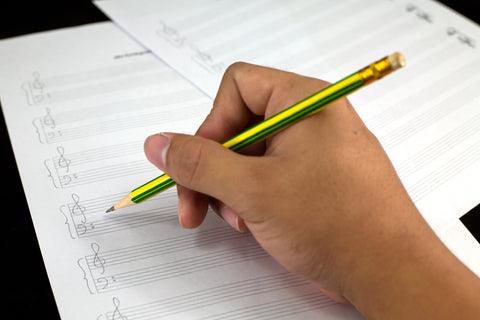
Approaches to the Supporting Notes document for drama and theatre studies
£14.95
The aim of this scheme of work is to provide teachers with a systematic approach to producing successful sets of Supporting Notes for the AQA A2 Drama and Theatre Studies practical exam. The Supporting Notes document is a vital part of the practical exam, and is the first indication a moderator will have of the work they are to assess. With careful planning and checking, all students can gain very high marks in this unit, and they can also use this document to help them plan and improve their own practical exam work.
The A2 practical exam asks students to develop original, devised work that demonstrates their understanding of a particular style of theatre, and it is the word style that drives the Supporting Notes work. This consideration is also what separates it from the AS Supporting Notes, where the focus is on a specific practitioner.
Supporting Notes break neatly down into three clear sections reflecting the devising process. It is extremely useful to make students complete the Supporting Notes alongside the development of their pieces, rather than leaving it to the end. The Supporting Notes should be a neatly-presented, typed and formal written document.
The mark scheme clearly suggests links between the devising and rehearsal process and the creation of the Supporting Notes, so it is wise to highlight this to students. This scheme of work will take teachers through each section and define precisely what should be included and the kind of vocabulary needed to achieve the highest marks.
To help students understand the demands of the Supporting Notes document, break it down into these three sections:
- Section A – Research, practical exploration and dramatic intentions
- Section B – Discussion and analysis of the devising process
- Section C – Assessment of potential effectiveness and health and safety considerations.
Each section is to be 700 words long and should have a word count included at the end of each.
Learning objectives
By the end of this scheme students will have developed skills in:
- Researching key practitioners associated with their chosen style of theatre
- Developing a useful working definition of the style, and using that to develop rehearsals and dramatic intentions
- Identifying key features of the style of theatre and using this knowledge to begin to demonstrate them in class
- Using live productions seen in their chosen style and referring to specific moments from them as ‘inspirational material’ for development
- Developing specialist terminology associated with that style
- Understanding the difference between analyses of rehearsal techniques and evaluating the potential effectiveness of the final piece
- Discussing reflection on feedback and use of it to refine the quality of the work
- Evaluating their own skill development
- Discussing relevant health and safety considerations and making them personal rather than generic, group based statements.




